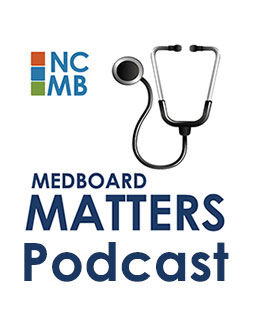Board makes preliminary move to adopt CDC opioid policy
Comments: 3 comments Print Friendly Version | Share this itemThe Board adopted a comprehensive opioid prescribing policy in June 2014. The U.S. Centers for Disease Control and Prevention published its opioid prescribing guidance in March 2016. Although the policies differ in some respects, the Board considers the two to be comparable resources. NCMB began evaluating the CDC guidance shortly after it was published, in the interest of ensuring the Board provides licensees with the most current information and recommended practices for safe and responsible use of opioids for the treatment of pain.
If finally approved by the Board, the following position statement will replace the existing Policy for the Use of Opioids for the Treatment of Pain.
Policy for the use of Opioids for the Treatment of Pain
The Board believes that a fundamental component of good medical practice includes the appropriate evaluation and management of pain. Responsibly prescribed opioid medications may help North Carolina licensees treat their patients' pain safely and effectively, and improve their quality of life. It is the duty of any licensee prescribing opioid medications for the treatment of pain to be knowledgeable of both the therapeutic benefits and potential health risks associated with an opioid treatment regimen. As in any medical context, the Board expects any licensee prescribing opioids for the treatment of pain to provide diagnoses, treatments, and medical record documentation that is consistent with the standards of acceptable and prevailing medical practice in North Carolina. Failure to provide care that meets that standard may subject the licensee to disciplinary action by the Board.
The Board has previously attempted to provide guidance regarding opioid treatment of pain to its licensees through guidance documents generated and maintained by the Board. However, in order to provide its licensees with guidance that reflects the most current medical and scientific research and recommended practices, the Board has decided to adopt and endorse the CDC Guideline for Prescribing Opioids for Chronic Pain written and maintained by the Centers for Disease Control and Prevention (CDC).
Click here to find the CDC Guideline for Prescribing Opioids for Chronic Pain.
In addition to its Guideline, the CDC has also provided a number of useful clinician resources related to opioid treatment of pain covering topics such as Non opioid Treatments, Assessing Benefits and Harms, Calculating Dosage, and Tapering.
Click here to find these documents.
It is the Board's hope that familiarity with the concepts included in the documents above will help licensees provide safe and effective care for their patients.
Comments on this article:
Yes the prescription drugs issue needs answers, but the plan needs to have everyone on board. The insurance carriers need to be involved to pay for some of the alternative meds, e.g. Celebrex. The cardiologists need to be on board with the use of NSAIDs. Currently they are not.this will leave treating docs in a corner, with no where to go. As an orthopedist , it’s hard to treat patients effectively now. A plan, poorly thought out, that doesn’t have everyone on board looks good on paper, but will yield poor treatment. Pts may suffer.
By Mike Getter on Nov 19, 2016 at 10:26am
Opioid abuse is certainly a problem and I can see the development of treatment guidelines to limit the potential of abuse. I do think that CME requirements for those of us who prescribe controlled substances on an infrequent basis is unnecessary. Could the board perhaps develop some threshold for a CME requirement; perhaps any provider who writes over 24 controlled substance prescriptions a year OR any provider who ever prescribes more than 30 opioid tablets in a single prescription OR who issues more than 2 controlled substance prescriptions per year for the same patient. I write perhaps 12-15 controlled substance prescriptions in 12 months; these are often for 10-12 tablets. I cannot see how Opioid R/X CME will improve my practice or reduce the “epidemic.”
By Wiley Cockrell, MD on Nov 21, 2016 at 9:12am
Chronic pain is not the only mechanism for opioid prescription abuse. Cough syrup containing oxycodon or hydrocodon is mixed w anything and everything (benzodiazepines, Soma and other muscle relaxants, Tramadol etc ) by patients for a high. Cough syrups need to be addressed by the CDC and NCMB and the Board of Pharmacy.
By Robbie Bracken MD on Jan 13, 2017 at 9:03pm
